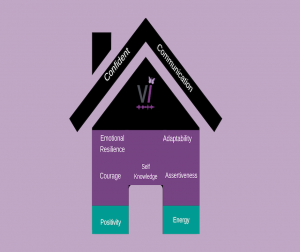In my recent podcast episode, I delved into a topic that resonates with us all—the inner critic. This relentless internal chatter can either propel us forward or hold us back, affecting not just our lives but also how we communicate. Having faced this firsthand, I want to share some insights and practical tips on how to silence that nagging inner voice and empower your thoughts and your voice.
Taking Charge: The “Voice in Your Head”
We all have a constant companion—the “inner critic,” or as I like to call it, the “voice in your head.” This inner dialogue can serve as a protector but may also hinder us with fears and criticism. What’s intriguing is how this inner critic significantly influences not only our thoughts but also the way our physical voice communicates.
Reframing: Changing the Narrative for Strength
In the podcast episode, I explored a powerful tool—reframing. This technique involves changing the story our inner critic tells us. Instead of succumbing to self-doubt, reframing allows us to choose thoughts that empower us. For instance, transforming “I can’t do this” into “I am capable, and I’m doing this” is a small shift that can profoundly impact how we perceive ourselves and how our genuine inner voice comes across.
Additional Tips to Tame the Inner Critic:
Tip 1: Notice and Change
Start by acknowledging when your inner critic raises its voice. When negative thoughts surface, pause and consciously redirect them. This simple yet powerful move empowers you to take control of the stories you tell yourself.
Tip 2: Be Kind to Yourself
Our inner critic can be harsher on us than anyone else. Practicing self-compassion involves treating ourselves with the kindness we would extend to a friend facing challenges. This change in perspective eases the pressure we place on ourselves, allowing our true inner voice to shine through in our singing or speaking and keeping that “voice in the head” out of the way.
Tip 3: See Challenges as Opportunities
Rather than perceiving challenges as insurmountable obstacles, adopting a growth mindset views them as opportunities to learn and grow. Embracing this mindset weakens the grip of the inner critic, transforming setbacks into stepping stones for personal and professional growth.
In Conclusion
Silencing the inner critic, that “voice in the head” is a transformative journey that positively impacts both your mindset and your voice. By taking charge, reframing your thoughts, and implementing practical tips, you empower yourself to navigate challenges with resilience and embrace the true strength of your inner voice. Remember, you can reshape your narrative and let your authentic voice shine through.
If you’d like to explore these ideas or others about using your voice with confidence in your business, why not get in touch? to arrange a chat. You can also take part in the conversation on Facebook in my new Be Truly Heard Forum if you’d like to join.




